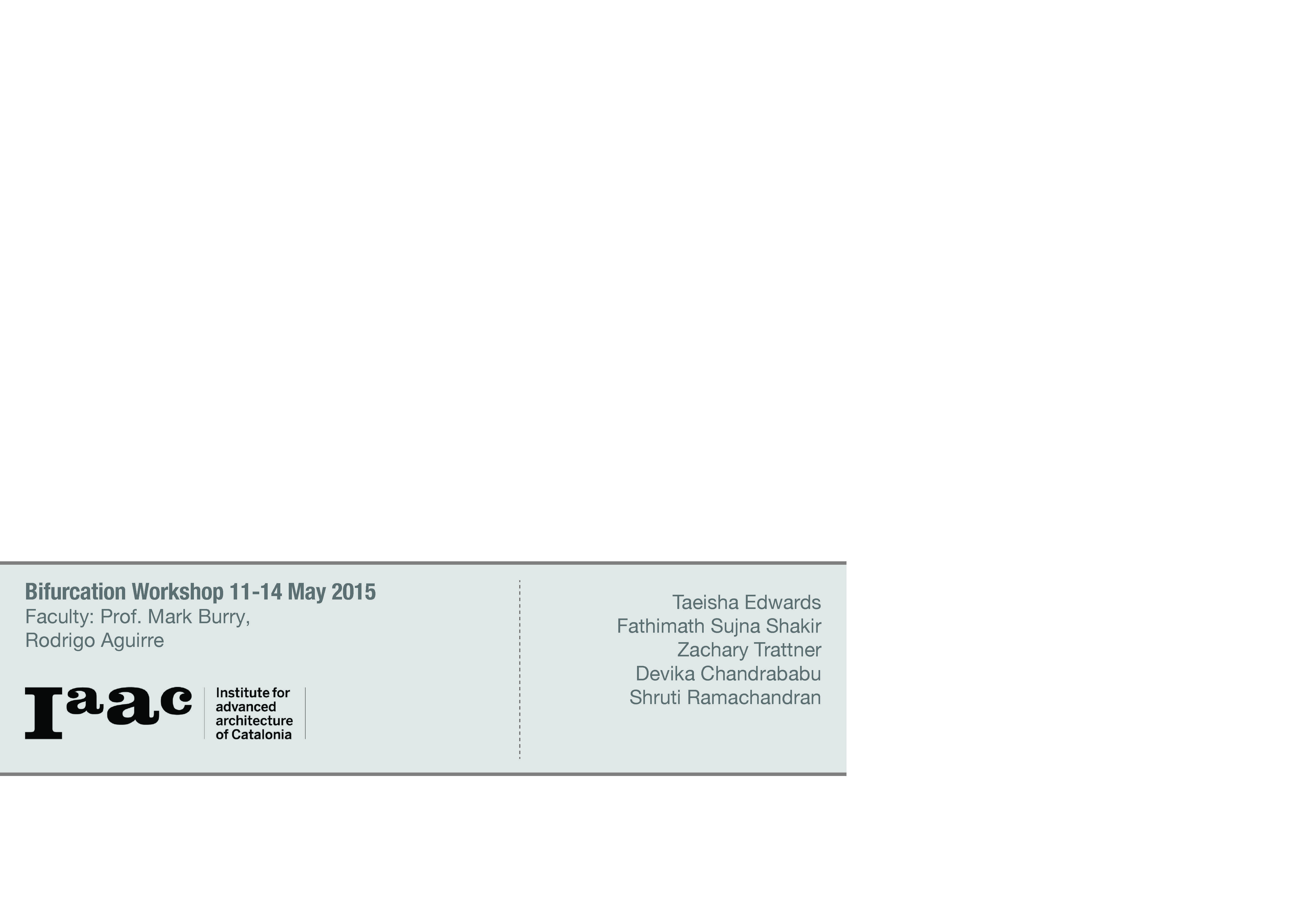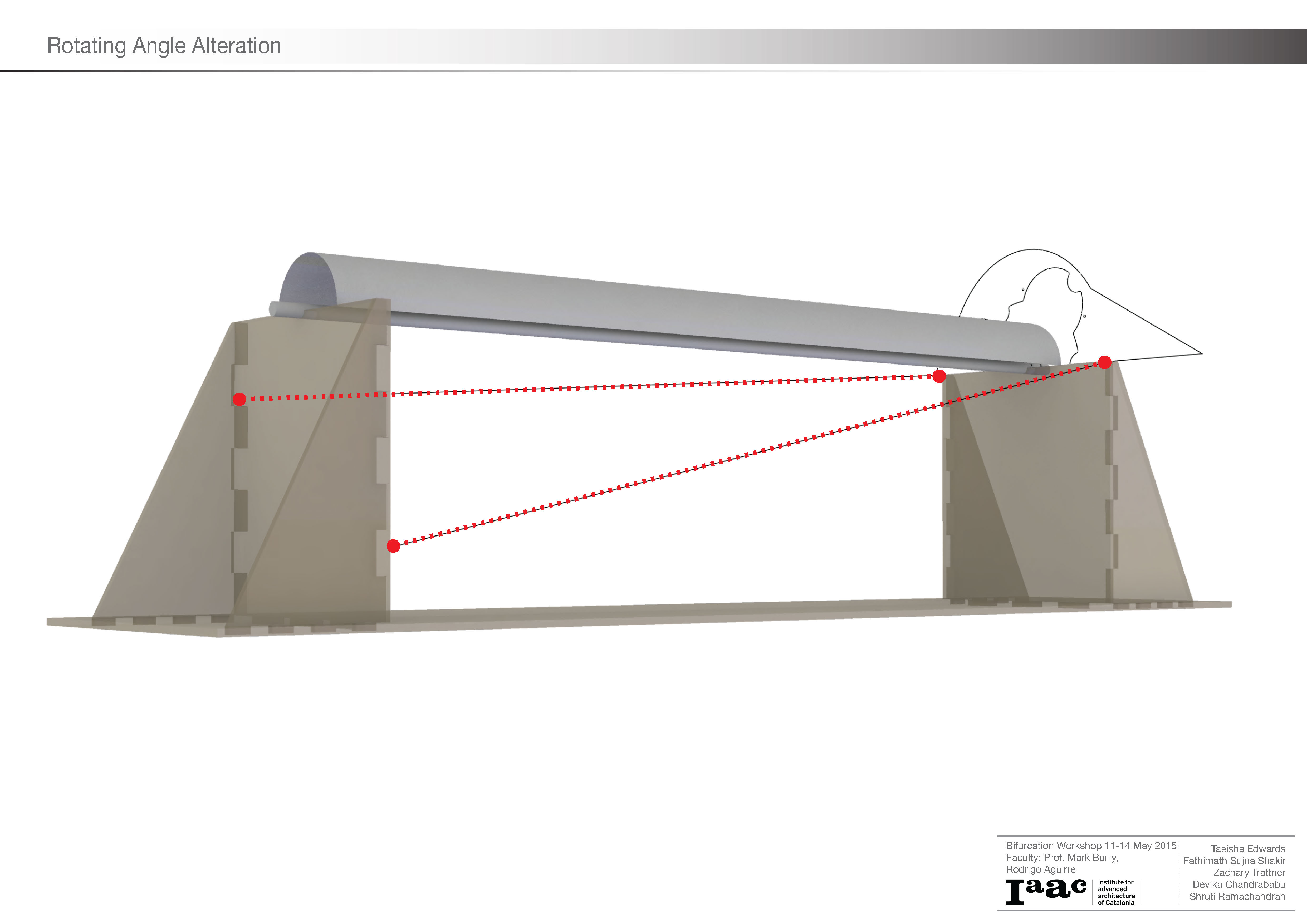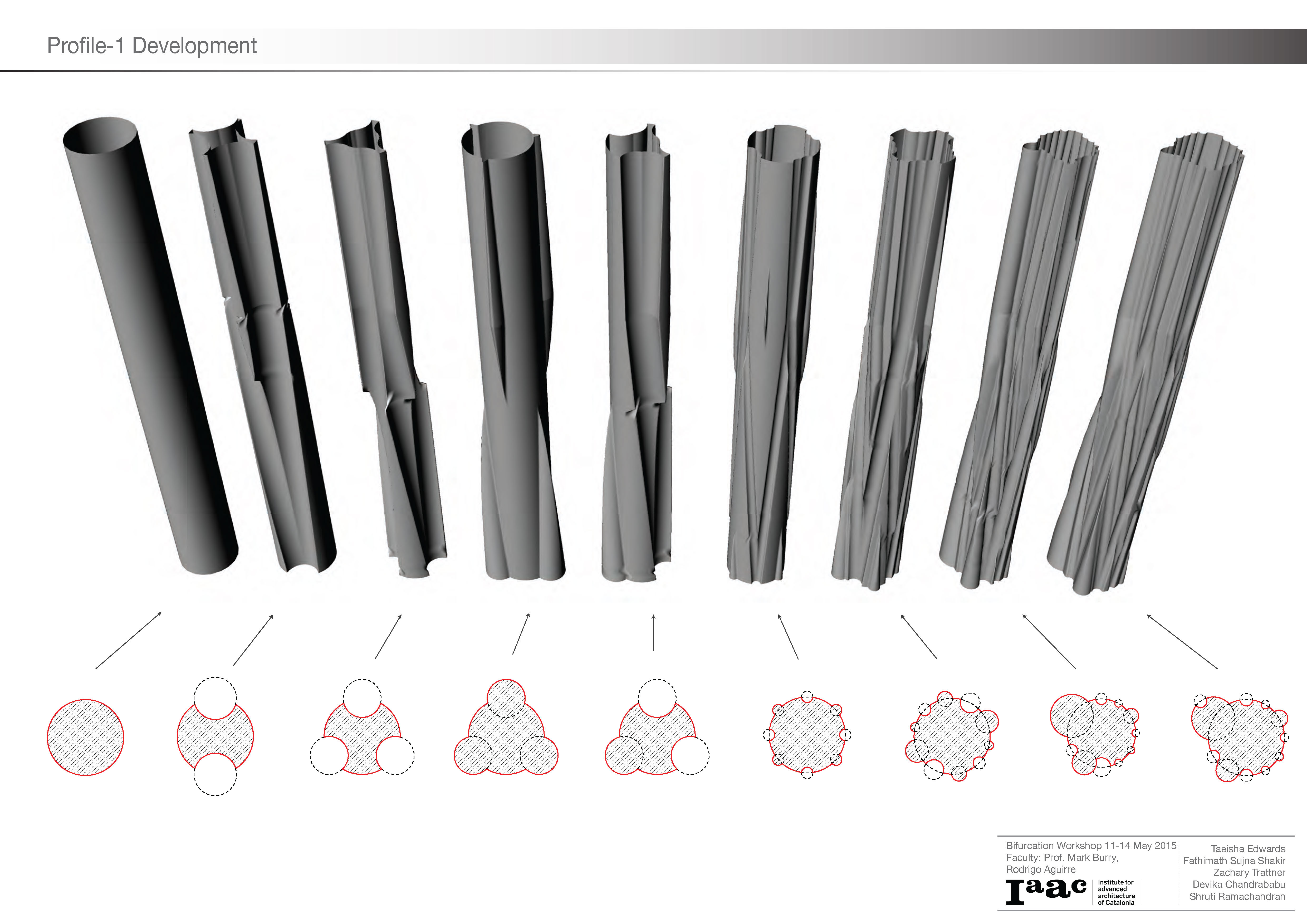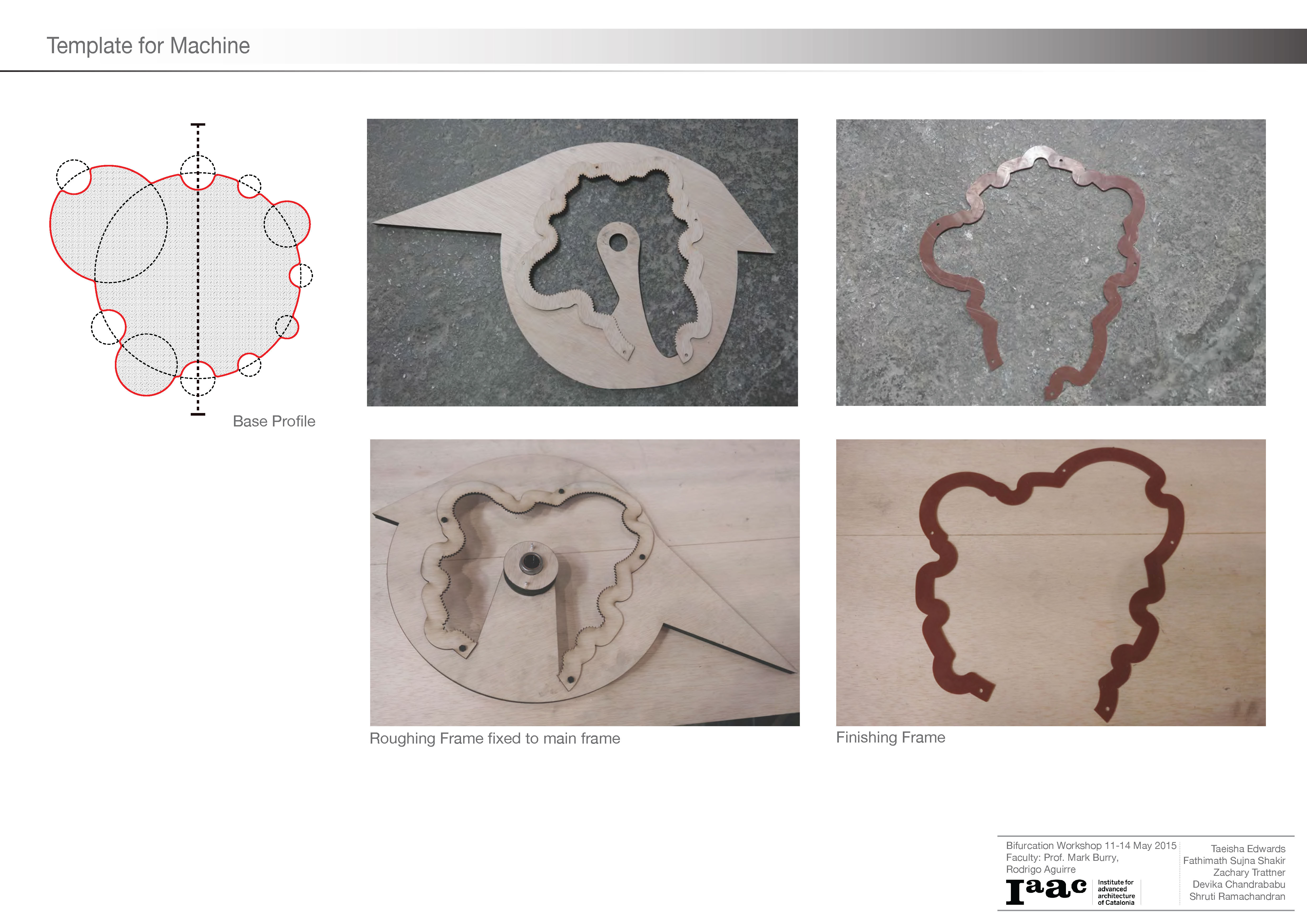Taking advantage of the manual process that Gaudi used to design the columns, he implemented in the sagrada familia, led us to merge the aspects of the digital tools as well physical fabrication. Using Rhinoceros, a 3d modelling software and grasshopper, a visual programming language; we were able to efficiently model different columns and bifurcations to represent the results. The outcome was achieved by using a geometry, which as it ascended up through the column, rotated clockwise and then anti-clockwise. The volume defined as the column resulted from the intersection of the two rotations. The fabrication of the column gave us a clear understanding of why we got the effects of the rotations, but more importantly, we were able to comprehend Gaudi´s methods of design in an era where no digital tools where available. Through our group exploration of form finding, we could come up with different outcomes that not only used Gaudi’s technique, but also could innovate in the looks and the way the columns bifurcated.





